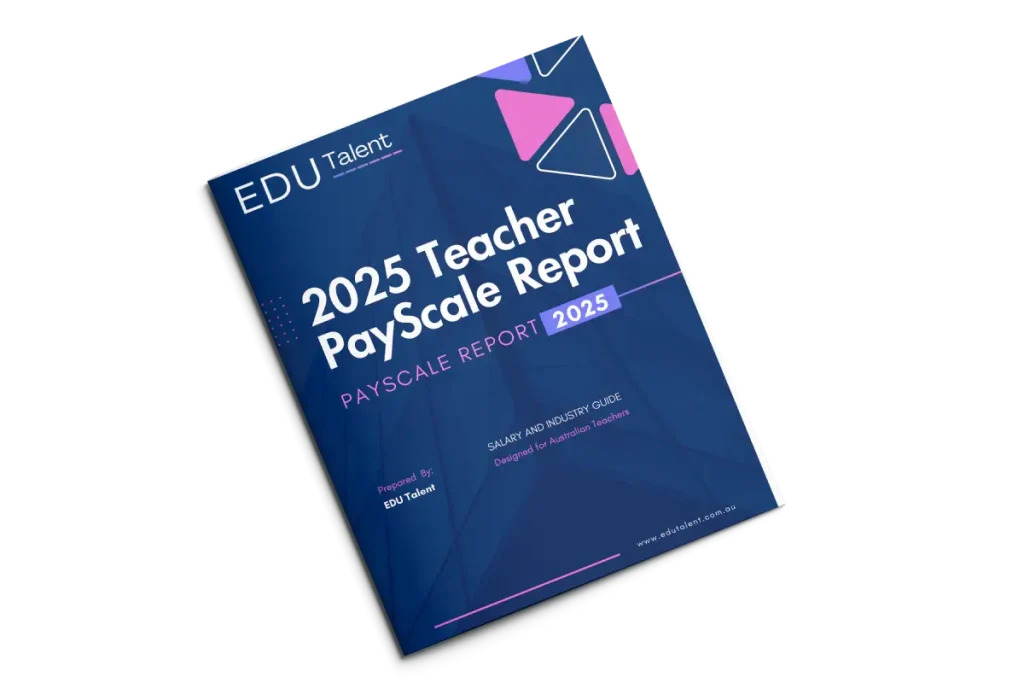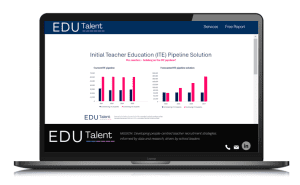Over the past month EDU Talent has been in close collaboration with two Data Specialist project teams (via Practera) , from across the University of Sydney, University of Wollongong, University of Technology, Macquarie University and the University of New South Wales.
The two project teams have dived-deep into datasets to develop a pathway forward for the Australian education sector, to move out of the staffing/teaching crisis.
As the educational landscape in Australia evolves, one of the pressing challenges is ensuring an adequate supply of qualified teachers. Addressing this issue head-on, recent findings from a comprehensive report developed by the team highlights the projected Initial Teacher Education (ITE) enrolments required over the next decade to sustain adequate inflow for our teacher workforce.
Formula and Model
One of the data specialist team have developed a sophisticated predictive formula and model, which has calculated the required ITE enrolments from 2025 to 2034. Below is a snapshot of the outcome of the formula:
- 2025: 55,921 required ITE enrolments
- 2026: 38,078 required ITE enrolments
- 2027: 38,126 required ITE enrolments
- 2028: 38,814 required ITE enrolments
- 2029: 38,195 required ITE enrolments
- 2030: 39,145 required ITE enrolments
- 2031: 39,510 required ITE enrolments
- 2032: 40,113 required ITE enrolments
- 2033: 41,048 required ITE enrolments
- 2034: 42,147 required ITE enrolments
The significant variance in the required ITE enrolments year-on-year indicates altering approach, by considering the previous years enrolments.
What the formula includes
The formula incorporates data from:
- Primary and secondary student enrolments across Australia
- The student-teacher ratio
- Predicting the future of student-teacher ratio based on trends and policies
- Developing a formula to predict the number of teachers required
- Factoring in ITE student attrition rates across higher education institutes in each state/territory
- Estimating the required ITE completion figure
Comparison
To put this 10-year predictive ITE enrolment requirement into perspective, 2022 saw ITE enrolments at 37,597. This means every university in 2025 needs to increase their current ITE student enrolment by 49% (in addition to this years enrolments), to help mitigate the teaching crisis. This ambitious target underscores the critical need for robust enrolment strategies and support systems for ITE students.
University retention strategies
Moreover, the project’s findings highlight the importance of university retention strategies. It is notable that the university with the highest student attrition rate for ITE students (which means lower graduation rates) provides ITE students with remote learning as their preferred method of learning. This points to a crucial area for intervention: improving the development and support offered to our ITE students, particularly in remote learning environments.
Key Recommendations
It now comes down to Australian universities taking a larger part in this conversation. Additionally, Australian teachers providing a positive perspective and outlook on profession to minimise any additional stress and workload placed on future teachers, from a understaffed workforce.
Increase ITE Enrolments:
Universities should aim to increase their current Initial Teacher Education (ITE) enrolments by 49% in 2025 to address the projected teacher shortage.
Enhance Support Systems:
Provide robust support systems for ITE students to improve retention and completion rates. Offer additional resources, mentoring, and academic support, particularly for students in remote learning environments.
Improve University Retention Strategies:
Address the high attrition rates among ITE students by developing comprehensive retention strategies. Implement regular monitoring and evaluation of student progress and provide timely interventions for those at risk of dropping out.
Focus on Remote Learning:
Improve the quality and support of remote learning for ITE students. Invest in technology and training to ensure remote learning environments are engaging and effective.
The datasets used by the project teams include:
https://www.aitsl.edu.au/research/australian-teacher-workforce-data







